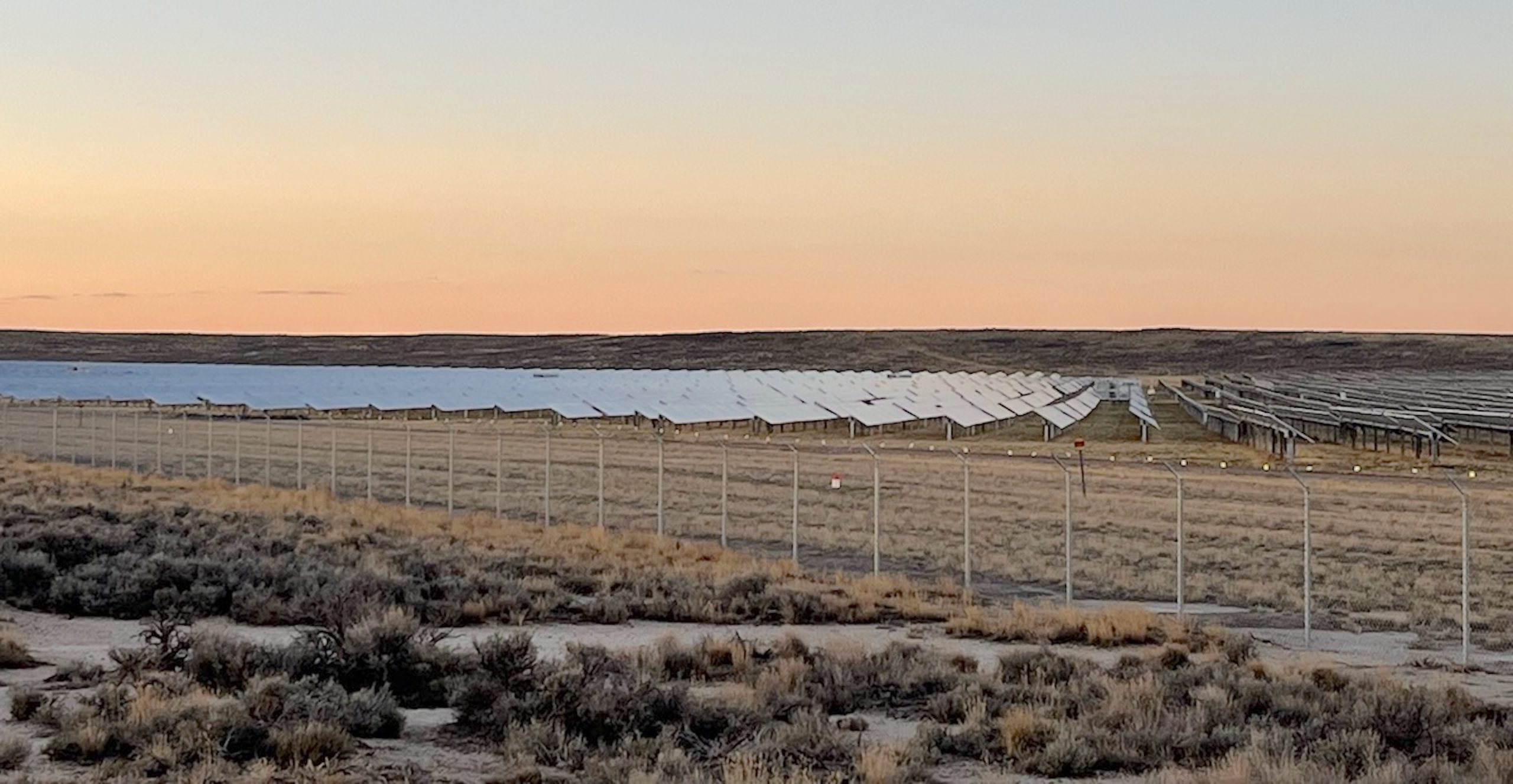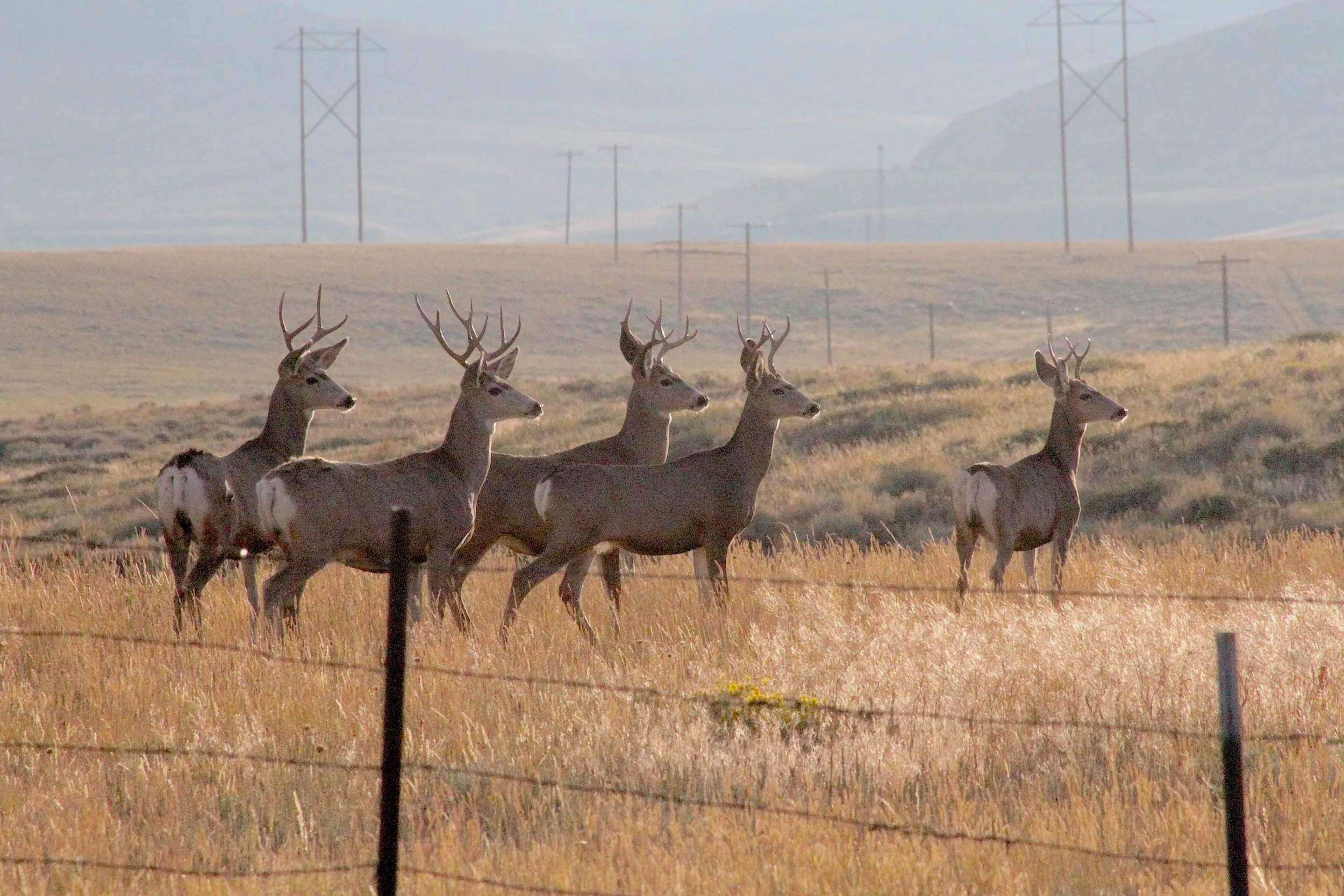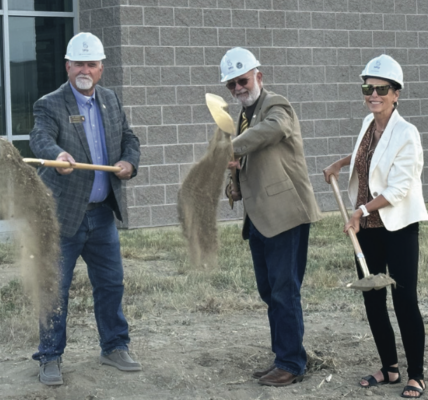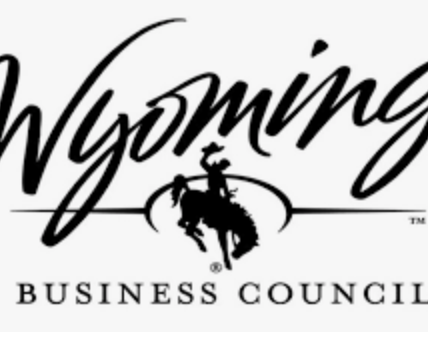Conservation groups press for big game habitat exclusions in federal solar energy initiative

• The Bureau of Land Management is accepting comments through April 18 on a plan to offer solar energy leases in Wyoming and several other western states.
By Dustin Bleizeffer, WyoFile.com
The Bureau of Land Management’s proposal to expand its Western solar energy initiative should be modified to carve out big game migration routes and critical wintering habitat in Wyoming, according to several conservation groups.
But the agency’s “programmatic” environmental impact statement at least provides a high-level blueprint to avoid piecemeal leasing decisions that often lead to conservation and energy development conflicts, they say.
“So often our work is defined by being reactive to circumstances and policies we really didn’t have any control over,” Wyoming Outdoor Council Energy and Climate Policy Director John Burrows said. “This is an exception to that and a really neat opportunity for us to be weighing in proactively to reduce conflict.”
The deadline for public comment on the BLM’s Western Solar Plan is April 18. (Click here to learn more about the proposal, and click here to submit a comment to the BLM.)
The BLM wants to increase solar energy production on federal lands 15-fold over the next 20 years, from about 9,200 megawatts to 130,000 megawatts, according to the agency. BLM’s proposal includes five alternatives for where it might offer leases for industrial-scale solar energy development, including the 18 million surface acres the agency manages in Wyoming.
The agency’s preferred plan, Alternative 3, would offer up about 3 million acres for solar energy leases in Wyoming (an area roughly the same size as Campbell County). However, the agency anticipates that commercial demand for solar energy on BLM lands in Wyoming is not likely to surpass 30,000 acres, based on market analysis by the U.S. Department of Energy.
“The purpose of this whole effort is to identify and hone in on where projects should be and should not be sited,” Burrows told attendees of a public webinar hosted earlier this month by the Wyoming Outdoor Council and The Nature Conservancy.
“We feel, unequivocally, that there is enough room for 30,000 acres of solar development on public lands to be sited in a way that’s not heavily impactful to wildlife and conservation resources in the state of Wyoming,” said Justin Loyka, The Nature Conservancy’s energy program manager in Wyoming.
Reached for comment, the Wyoming Stock Growers Association told WyoFile it has concerns regarding the BLM’s solar energy initiative, particularly “when it removes land from livestock grazing,” the association’s Executive Vice President Jim Magagna said.
Solar energy facilities can be adapted to coincide with livestock grazing — especially sheep, Magagna said. But that’s mostly a prospect afforded to private landowners who can negotiate such terms. “As I understand the BLM [plan], maintaining grazing would not be a goal of the agency.”

Increasing interest in Wyoming solar
Solar energy developers have announced several plans for large photovoltaic projects in Wyoming in recent years — mostly on private land.
Cowboy Energy’s Goshen Solar project would span some 1,200 private surface acres near Yoder to generate 163 megawatts of electricity.
Canada-based Enbridge Inc. has proposed a 400-megawatt solar and 136-megawatt battery storage project south of Cheyenne, spanning some 4,000 private surface acres.
BrightNight LLC’s proposed Dutchman Renewable Power Project, located on private land 1.5 miles northeast of Glenrock, would generate 499 megawatts of solar energy and include battery storage, according to the company.
The city of Cheyenne is in talks with developers to co-locate a 50-megawatt “cattle voltaic” solar facility on lands the city leases for grazing.
So far, there’s only one solar energy facility on BLM lands in Wyoming: Power Global’s Sweetwater Solar farm north of Green River has a generation capacity of 100 megawatts.
The flood of new interest in developing solar energy in Wyoming follows years of technological advances that make commercial-scale photovoltaics possible in more northern reaches, according to Burrows. Federal tax credits for solar energy in the Inflation Reduction Act also help make it “very cost competitive,” he said.
Now, the federal government wants to ensure that federal lands play a role in meeting congressional and Biden administration goals to boost renewable energy. But there’s a lot at stake for balancing federal ambitions to encourage renewable energy development while protecting other landscape uses and values.
“So that combination of factors is really leading to what we think will be a growth in solar energy,” Burrows said, “and a growth in solar energy that will impact our public lands.”
The Sweetwater Solar facility, for example, is a “case study” for how not to site solar energy in Wyoming, according to the Wyoming Outdoor Council.
Wildlife impacts
The Sweetwater Solar facility spans a portion of Highway 372 and occupies a migration route and crucial winter range for pronghorn. Solar facilities are required to be fenced off, which resulted in a “total habitat loss for pronghorn” and led to mass casualties, including an incident where thousands of pronghorn funneled onto the busy highway the winter after the facility was built, according to Wyoming Outdoor Council Wildlife Program Manager Meghan Riley.
“This just illustrates that it matters where we put these projects,” Riley said.
At the onset, the BLM has removed Wyoming’s sage grouse core areas from consideration for solar energy leasing — a move that conservation groups say will avoid drawn-out regulatory and legal battles. However, the BLM’s current proposal doesn’t exclude defined big game migration corridors or crucial winter habitat.
“We’re going to have to address that,” The Nature Conservancy’s Loyka said.
Several conservation groups in Wyoming say they prefer the most restrictive “Alternative 5” in the BLM’s proposal, which would limit solar leasing opportunities to within 10 miles of existing electric transmission corridors.
But even that alternative doesn’t go far enough to assuage concerns over big game winter habitat and migration routes.
The Wyoming Wilderness Association, Theodore Roosevelt Conservation Partnership and others say they will press the BLM to exclude such vital habitats regardless of which alternative it ultimately chooses.
“We still think there needs to be more protections in those alternatives to ensure that wildlife habitats and migration routes are being protected,” Burrows said.
WyoFile is an independent nonprofit news organization focused on Wyoming people, places and policy.





